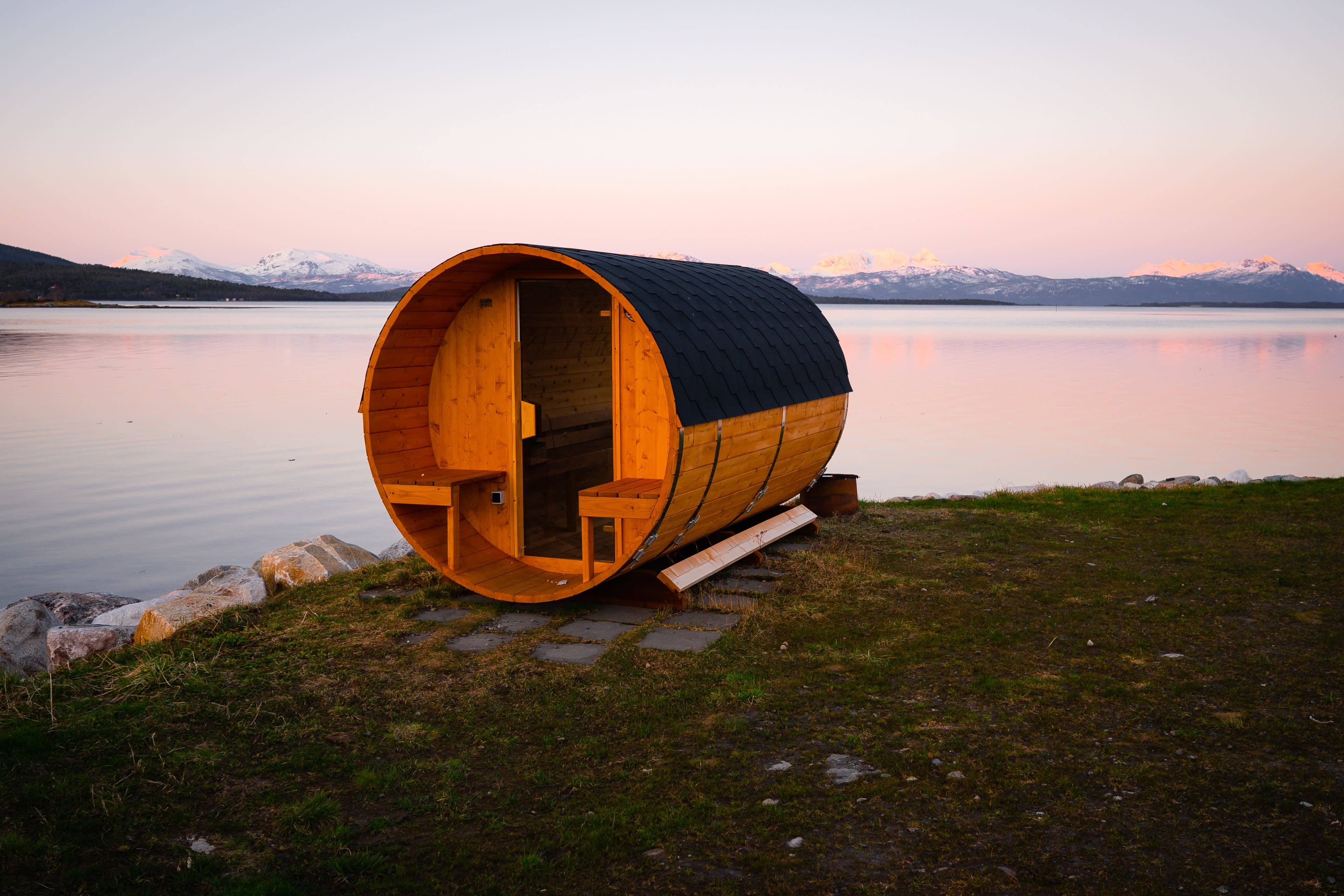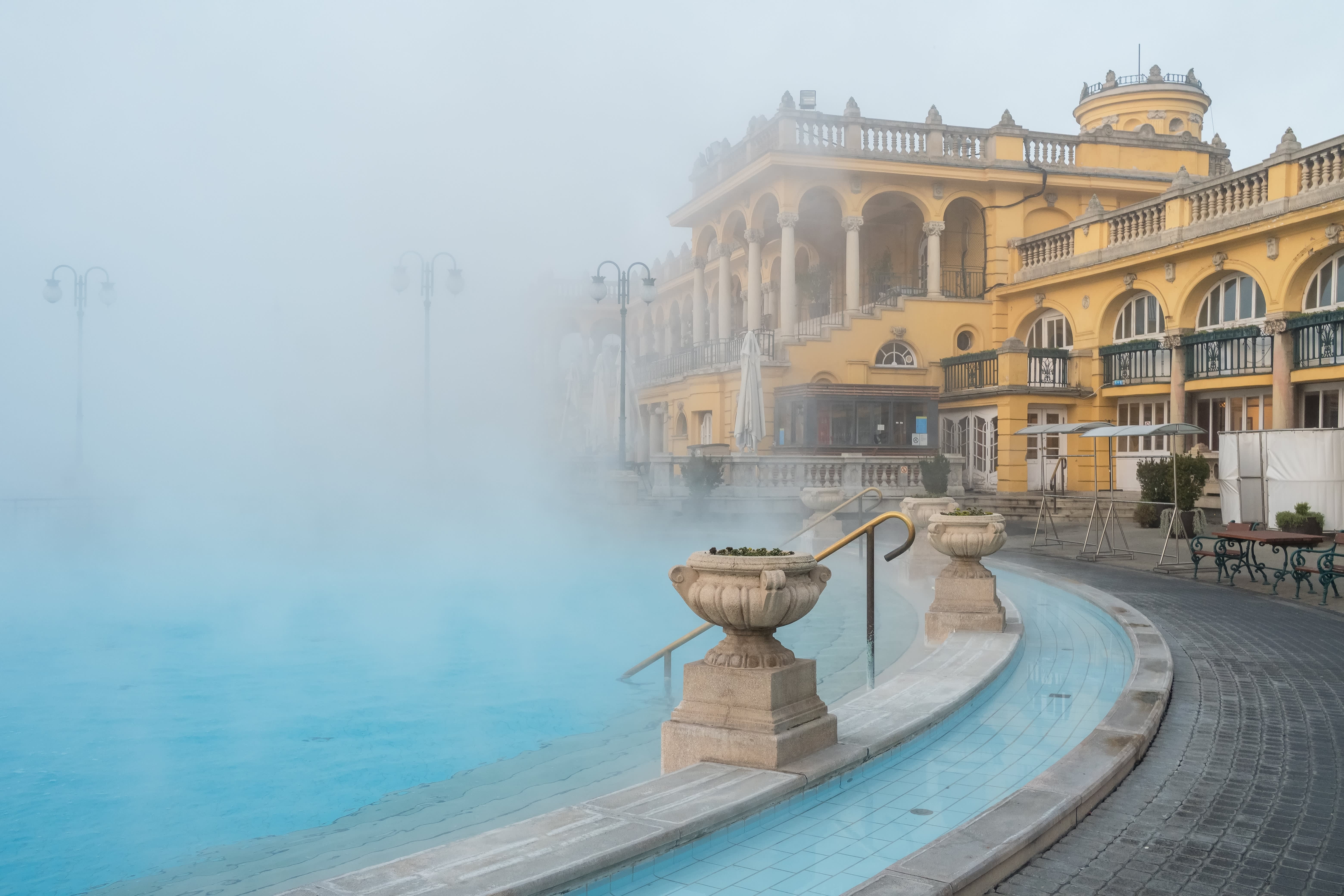
The list of 2026’s winners is here
The biggest ‘do’: let go of your inhibitions and relax

In Helsinki, there’s a sauna cabin in the giant Ferris wheel that spins above the harbor. In Slovenian ski resorts, when people refer to “the wellness,” they mean a full hotel floor of saunas. And in the Dolomites, the saunas serve as entertainment centers, places where dancers spin with towels as strobe lights flash.
That’s how central saunas and bathhouses are to society—and also to holiday-making—across Europe. These are rituals that predate modern spa culture, a way to warm up after a cold day but also so much more: relaxation, wellness, and social connection.
At the same time, they come with conventions that can be daunting to outsiders, and those rules vary between regions. But no matter where travelers venture, it’s worth remembering that these are places of relaxation and conviviality, where everyone is likely to be in a good mood. It’s never wrong to ask for advice.
While each region and maybe even each resort might have a quirk of its own, it’s helpful to think of three major divisions.

Finland is considered to be the birthplace of the modern-day European sauna, with people gathering in small heated structures for more than 2,000 years. (Fun fact: Sauna is the only word from the Finnish language to have made it into the English dictionary.) Today that country and its Nordic neighbors continue to live with sauna time woven into everyday life.
Finnish saunas are simple wooden structures, found everywhere from hotel suites to remote lakesides, or even floating on the Baltic Sea. They’re based on dry heat from a stove with hot stones on top. Guests use a ladle to splash water on these to release bursts of steam. Sweden’s version is similar, with a special emphasis on lakeside locations, where they serve as a counterpoint to the cold swimming trend that’s still going strong.
Iceland also has its share of saunas, but locals and visitors tend to prefer to warm up in the island’s many geothermal springs. The renowned Blue Lagoon is the most famous, but it’s not the only place where travelers can soak in mineral-rich waters surrounded by dramatic volcanic landscapes.

In the German-speaking countries, the spa culture is sophisticated and steeped in history. Centuries-old spa resorts, where assorted royals went to “take the waters” for health concerns, are leaning into that heritage. While their medical claims are more limited today, spa towns like Baden-Baden, Germany; Bad Ischl, Austria; and Bad Ragaz, Switzerland, are introducing new generations to the restorative pleasures of soaking and sweating in beautiful settings.
Apart from the classic spa towns, saunas are likely to be part of the wellness offerings at ski resorts. There are often panoramic saunas with mountain views, and sometimes there’s entertainment. Especially in Tyrol and the Dolomites, the increasingly popular aufguss is performance that grew out of dousing the hot stones with essential oils and fanning the aromatic steam. Now the sauna masters execute choreography in time with contemporary music and light shows.

From the Baltics to the Balkans, Eastern Europe offers an array of bathing traditions, ranging from ornate 19th-century bathing complexes to humble village saunas.
In Estonia, Latvia, and Lithuania, sauna (here called pirti) culture is woven into the national psyche. In its most traditional form, the Estonian pirti—which has been recognized by UNESCO as an intangible cultural heritage—was a family ritual that used smoke to mark events like births and deaths. Tourists are more likely to encounter a softer version with steam rather than smoke, but still with a cycle of sweating, plunges into cold water, and whisking the body with leafy branches.
Hungary has more in common with its German-speaking neighbors, particularly in the grand bathhouses that have earned Budapest its reputation as the spa capital of the world. Popular favorites like Széchenyi and Gellért have lavish old-world architecture, mineral pools, and various steam baths and saunas. Neighboring Poland, Czech Republic, and Slovakia have similar but smaller public facilities, while Slovenia and Croatia mix Alpine and Adriatic influences, sometimes incorporating thalassotherapy, or treatments based on seawater.
While European saunas and bathing facilities range from rustic log cabins to gleaming bathhouses, they share some commonalities. Typically, there’s a lounge for relaxing and drinking water after or between sweat sessions.
In larger facilities, there are multiple types of saunas, all with different temperatures or humidity levels. The moist air in some may be infused with essential oils. In many regions, everything is shared by all bathers, although in some cases there are separate times or facilities for men and women.
Fifteen minutes is long enough to get the benefits of a sauna. Longer can become dangerous, and visitors should always leave a sauna if they feel unwell (even if there’s a performance going on—the aufguss master won’t mind). Guests can go in once and call it a day, or they may do several rounds, taking breaks in between to let their body temperature return to normal.
Often there’s a place to cool off before, after, or between rounds. This could be a natural lake or snowbank, a cool plunge pool, a shower, or a pile of crushed ice that can be rubbed on the body. Using the cold features is always optional, as some people find the outdoor air cooling enough.
In many places with serious sauna cultures, sweating in Spandex is considered unsanitary and bathing suits are outright verboten. In others, swimsuits are optional or occasionally even required. It’s wise to ask about the rules when checking in. In any case, people are always welcome to cover their bodies with towels.
When travelers are staying in a hotel that has sauna facilities, they will typically have a robe and slippers in their guest room, which they should put on before taking the elevator to the spa or wellness floor. They should also shower before entering a sauna, either in their room or in the wellness area.
While nudity is generally accepted and no big deal, travelers should not let their bodies touch the facilities. Towels will be provided, and they should be used for sitting on and beneath the feat.
And it practically goes without saying that all the usual spa rules apply: speak quietly, enter and leave calmly, respect other guests, and don’t bring phones.
Remember that saunas and bathing facilities are meant to be places of calm and cultural tradition. Travelers should embrace the experience, ask questions if they have any doubts, and leave their inhibitions along with their bathrobes outside.